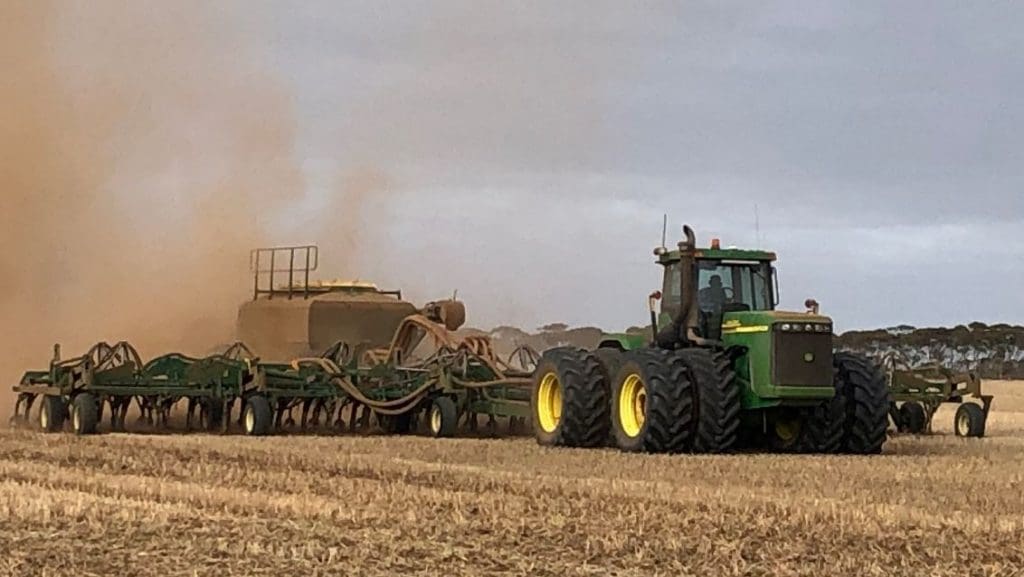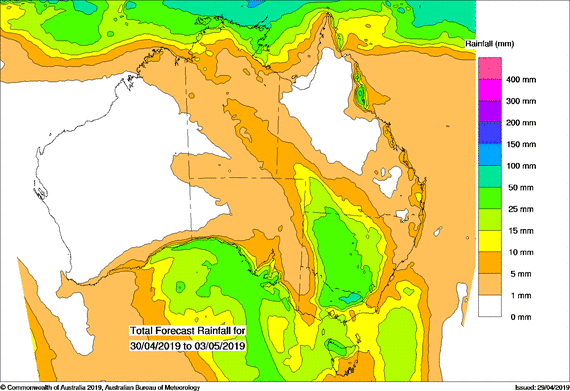
Growers in parts of south eastern Australia are busy dry sowing winter crops in anticipation of rain over the next few days.
WINTER croppers through south eastern Australia have their fingers crossed that a rain front set to move across the region over the next few days will bring heavier falls than models currently forecast.
The Bureau of Meteorology is predicting parts of the Victorian and southern and central New South Wales cropping zone may receive upwards of 20 millimetres in the next four days, while prospects have been diminishing in South Australia where the outlook is now for 5-10mm.
In Central West NSW, IMAC Consulting agronomist/director at Forbes, Cameron Corke, said growers were out in force dry sowing main season wheats and barley in anticipation of the rain.
“There are already some early canola and winter wheat crops in and up. There have been storms in the last few months, so there is moisture in places. There is a lot of variability. This rain coming on top of that will be very helpful,” he said.
“It is good that it is coming now rather than a couple of weeks later. The next question is, when will the next follow up fall come?”

The Bureau of Meteorology’s four-day rainfall outlook shows potential for reasonable falls in the south east cropping regions.
In Victoria, Birchip Cropping Group chief executive officer, Chris Sounness, said forecast models varied from the state receiving 5mm over the next few days to the most optimistic predicting 30mm plus.
“The 5mm is the more likely, and that will be on the light side of what most farmers are looking for. But if it gets up to 10mm it will be enough for the one-third of the crop that is in the ground at the moment to get it out of the ground,” he said.
“5mm is going to be annoying and cause uneven germination; 10mm will be acceptable; anything more than that and people will be walking taller.”
Mr Sounness said growers had been sowing winter crops since late March and much of the cropping area had some subsoil moisture from rains in December/January.
“At the end of December and in January we had two major rain events. Birchip had eight inches (200mm) and most of the region had two or three (50-75mm), so there is subsoil moisture,” he said.
“Farmers have worked hard to maintain that as much as possible through their summer weed control. They are feeling hopeful that if they can get the crops up and growing they are in with a chance.”
Mr Sounness said some pasture, canola and early wheat had already gone in.
“Barley is the floater in the system because of the challenges with pricing and trade. While barley has often been the backstop crop for the region, there are a lot of people wondering how much barley they will put in this season,” he said.
“Farmers will be sticking with lentils, chickpeas and faba beans if they are part of their rotation.”
Rainfall prospects for South Australia have been fading as each day goes by with Grain Producers SA vice chair and Lower North farmer, Adrian McCabe, now holding out little hope for substantial falls.
“We might get 10mm which is going to be confusing and bit of a nuisance. Will it shoot crops or not? Do we put chemicals out, or don’t we? If we get 15 to 20mm it will start to green,” he said.
On his farm at Hamley Bridge there has only been 6mm of rain since November – “as dry as we’ve ever seen it”.
He is about one-third to half way through winter crop sowing with some canola, wheat and durum in.

HAVE YOUR SAY